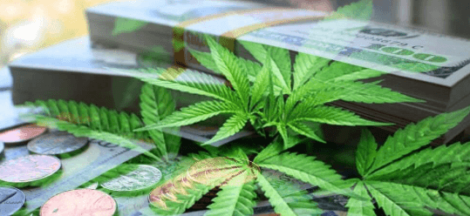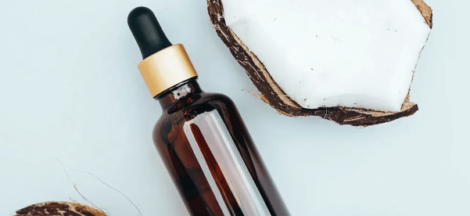Are you curious about the buzz around CBD and hemp? Does hemp have cbd? You might have heard that they go hand in hand, but what exactly is CBD and how does it relate to industrial hemp? More importantly, can you really extract CBD from hemp? In this blog post, we will delve into the science behind CBD extraction from industrial hemp. From understanding the different types of CBD to exploring where it comes from and how it’s extracted – we’ve got you covered! Grab a cup of tea or coffee and join us as we explore the fascinating world of hemp and its relationship with one of its most popular extracts: cannabinoid (CBD).
What is CBD?
CBD is short for cannabidiol, which is one of the many chemical compounds found in hemp plants. It’s a non-psychoactive substance, meaning it doesn’t produce any mind-altering effects like THC (tetrahydrocannabinol), another common compound found in cannabis plants.
Many people use CBD products for its potential health benefits, such as reducing anxiety and depression symptoms or relieving pain associated with chronic conditions. Unlike some prescription drugs, CBD is generally considered safe and well-tolerated by most people.
There are different types of CBD products available on the market, including full-spectrum CBD, broad-spectrum CBD, and CBD isolate. Each type has varying levels of other compounds present in hemp plants depending on how they’re processed.
While research surrounding the effectiveness of using CBD for various medical purposes is still ongoing, anecdotal evidence and early studies suggest that it may be beneficial for certain conditions. However, it’s always important to consult with a healthcare professional before adding any new substances into your wellness routine.
The Different Types of CBD
CBD, or cannabidiol, is a cannabinoid compound that can be extracted from the cannabis plant. However, not all CBD products are created equal – there are different types of CBD that have varying levels of potency and purity.
One type of CBD is full-spectrum CBD, which contains all the cannabinoids found in the cannabis plant including THC (tetrahydrocannabinol). Full-spectrum CBD may provide enhanced benefits due to what’s known as the “entourage effect,” where all the cannabinoids work together synergistically.
Another type of CBD is broad-spectrum CBD, which also contains multiple cannabinoids but has had any traces of THC removed. This can be a good option for those who want to avoid THC altogether but still want some added benefits beyond just pure isolate-based products.
There’s pure isolate-based CBD which only contains cannabidiol and nothing else. This form of CBD is typically favored by those who don’t want any other compounds present in their product or need to pass drug tests that screen for even trace amounts of THC.
Understanding these different types of CBD can help you make an informed decision when it comes to choosing the right product for your needs.
Where does CBD come from?
CBD, short for cannabidiol, is a naturally occurring compound found in the cannabis plant. It is one of over 100 cannabinoids that have been identified in the plant so far. CBD does not produce the psychoactive effects commonly associated with marijuana use; instead, it has numerous potential health benefits.
CBD can be sourced from both hemp and marijuana plants. Hemp-derived CBD products are legal under federal law as long as they contain less than 0.3% THC (tetrahydrocannabinol). Marijuana-derived CBD products are only legal in states where marijuana use has been legalized.
Hemp plants are typically used to extract CBD due to their high concentration of the cannabinoid and low levels of THC compared to marijuana plants. The extraction process involves separating the CBD compound from other compounds found within the hemp plant using various methods such as CO2 extraction or ethanol extraction.
Once extracted, pure CBD oil can be incorporated into a variety of products including oils, tinctures, capsules, edibles and topicals. Furthermore, manufacturers can further refine pure CBD oil into different types such as full-spectrum or broad-spectrum depending on how many additional cannabinoids are present alongside it.
Understanding where and how CBD is derived from provides insight into its diverse uses and applications in today’s market.
How is CBD Extracted from Industrial Hemp?
CBD extraction from industrial hemp involves several steps that require specialized equipment and expertise. The most common method used is the CO2 extraction process, which involves using pressurized carbon dioxide to extract the CBD oil from the plant.
The first step in this process is placing the hemp plant material into an extractor vessel. Once inside, pressurized CO2 is introduced into the chamber, and it permeates throughout every crevice of the plant material to dissolve and extract cannabinoids, terpenes and other beneficial compounds present in hemp.
Next, a separator removes any remaining solvents used during extraction. After this step, what remains are concentrated extracts containing CBD oil along with various other essential compounds of industrial hemp.
These concentrates go through additional processes such as winterization or decarboxylation depending on their intended use before being packaged for sale or further processing.
Extracting CBD from industrial hemp requires technical knowledge and skill to achieve high-quality yields while preserving all beneficial components within the natural plant material.
The Science Behind CBD Extraction from Industrial Hemp
The process of extracting CBD from industrial hemp requires a scientific approach that utilizes various methods to achieve the desired results. The most commonly used method is CO2 extraction, which involves using carbon dioxide under high pressure and low temperature to extract the cannabinoids from the plant material.
This method allows for precise control over the extraction process, ensuring that only the desired compounds are extracted while leaving behind unwanted materials. Another benefit of CO2 extraction is its ability to produce highly potent and pure extracts with minimal risk of contamination.
Another popular method for CBD extraction is ethanol extraction, which involves soaking the raw hemp material in ethanol or another solvent to extract the cannabinoids. While this method can be effective at producing high-quality extracts, it carries a higher risk of residual solvent contamination if not done properly.
CBD extraction from industrial hemp requires specialized knowledge and expertise in order to produce safe and effective products for consumers. By understanding these scientific processes, we can ensure that we get the best possible quality when purchasing CBD products derived from industrial hemp.
Conclusion
CBD extraction from industrial hemp is a complex process that requires specialized equipment and expertise. Despite the challenges involved, the benefits of using CBD as a natural remedy for various health conditions have made it increasingly popular in recent years.
It’s important to note that not all hemp contains significant levels of CBD. Therefore, when buying products containing CBD, you should always check their sources and ensure they come from reputable companies that follow strict quality control measures.
As more research is conducted on the potential uses and benefits of CBD, we can expect to see continued growth in its popularity and availability. With proper knowledge about how this compound is extracted from industrial hemp plants, consumers will be able to make informed decisions about which products are right for them.





 The Benefits of cbd oil no thc for Anxiety and Pain Relief
The Benefits of cbd oil no thc for Anxiety and Pain Relief